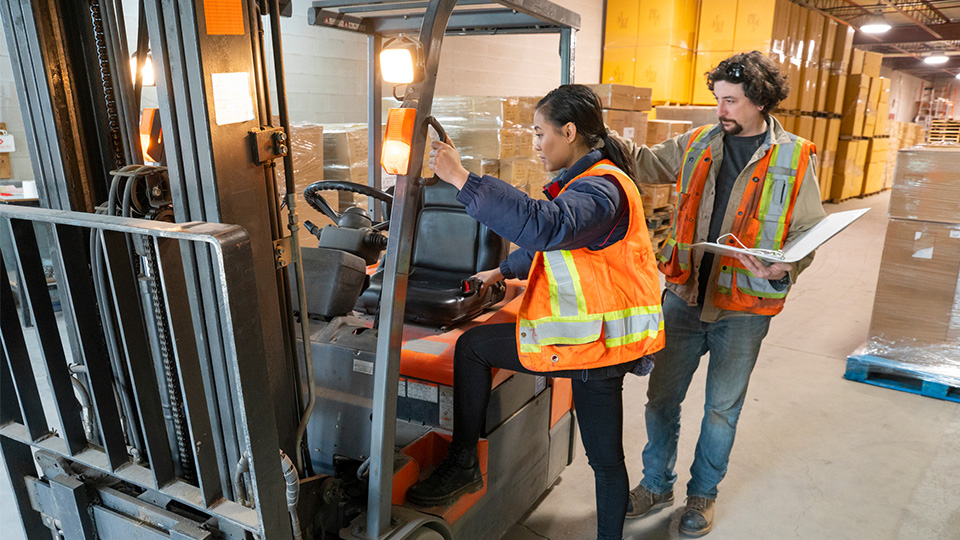October is National Safe Work Month, so the AMCA is driving home vehicle safety to keep people in the commercial heating, ventilation and air conditioning (HVAC) industry out of harm’s way.
This article is part of a series in our campaign, Driving blind? It’s a grave choice.
Did you know that vehicle collisions were responsible for almost one in three work-related deaths in Australia in 2017?
Driving and operating vehicles are critical to the commercial heating, ventilation and air conditioning (HVAC) industry, but it needs to be done responsibly.
Whether you’re driving a fleet vehicle to a job or operating a forklift, the risks of ignoring proper vehicle safety, maintenance and training are too serious for you and your co-workers.
Getting behind the wheel is one of the most dangerous jobs in Australia, with machinery operators and drivers having the highest work-related fatality rate in 2017, according to Safe Work Australia.
Vehicle-related accidents also have a significant financial impact in terms of productivity and business continuity, with workers’ compensation claims caused by vehicle incidents leading to more time off work compared to most other workplace claims.
Fortunately, there are many things you can do to keep your workplace safe such as introducing health and safety training and policies for work vehicles and machinery.
Vehicle safety
In 2016, the leading four causes of fatal car accidents in Australia were distractions, driver fatigue, speeding and alcohol consumption.
Drivers face distractions on the road all the time, including mobile phones, passengers and billboards.
If you are driving at 60 km/h and look at your mobile phone for just two seconds, you travel for 33 metres blind, according to the NSW Centre for Road Safety.
There have also been studies to show you are four times more likely to crash a vehicle if you are using a mobile phone while driving.
There are numerous ways that drivers can minimise distractions, including turning on the ‘do not disturb’ function on a smartphone or turning it off altogether.
Alternatively, make sure you have a car phone mount with the hands-free function set up and keep calls to an absolute minimum, as even hands-free calls are a distraction.
For further tips, see AMCA’s Safe Vehicle Driving procedure. AMCA offers a range of policy and procedure documents to help you with all your safety needs, which is available exclusively to members.

Staff training
Staff training for driving and operating vehicles is essential for every workplace.
Employees should be trained on how to safely operate any vehicles and machinery as part of their job.
For example, workers should adjust the seat, steering wheel and safety mirrors before setting off to avoid any distractions while driving, as well as check whether the vehicle has an electronic or foot-operated parking brake.
Employees should be trained to know when to rest if they are tired and driving long distances.
Anyone who is transporting hazardous materials like gas cylinders should understand the general safety requirements such as firmly securing cylinders to prevent movement and ensuring contents labels can be clearly read.
For employees working in rural or regional areas, it’s important for drivers to be trained on driver fatigue and the risks around working alone or covering greater distances.
To train staff, you need easy-to-read yet thorough health and safety policies in place that are readily accessible for employees.
You should feature safe driving and machinery operation procedures at the induction and training stage, as well as separate policies so employees can access those procedures later on.
AMCA members get exclusive access to policy templates for induction and training programs, safe vehicle driving instructions, fatigue hazard checklists. Apply to become a member here or log in to the membership portal here.
Vehicle maintenance
If your workplace uses vehicles ranging from fleet cars to forklifts, then periodic vehicle maintenance is crucial to avoid break downs and ensure they stay safe to use.
All tyres, including the spare tyre, should be in good condition and correctly inflated. Look for large cuts, cracks and uneven wear on the tread shoulders.
Check all your vehicle lights are working and not dirty, broken or faded, including:
-
headlights
- front park and side lights
- brake lights
- tail lights
- turn signal indicator lights
- number plate lights
- reversing lights
- hazard or emergency lights
- side and clearance lights (if equipped).
Take a look under the bonnet and check all fluid levels, battery connections and charge levels, fan belts, and the radiator and heater hoses.
You may also want to check the horn, seatbelts, windscreen and wiper blades are all in working order where relevant, and whether there is a basic first aid kit in the vehicle.
The HVAC industry regularly uses different vehicles, including heavy vehicles, cranes and cherry pickers, so remember to check the vehicle’s individual maintenance requirements.
Vehicles found to be unsafe or defective should be taken off the road until the repairs are completed.
